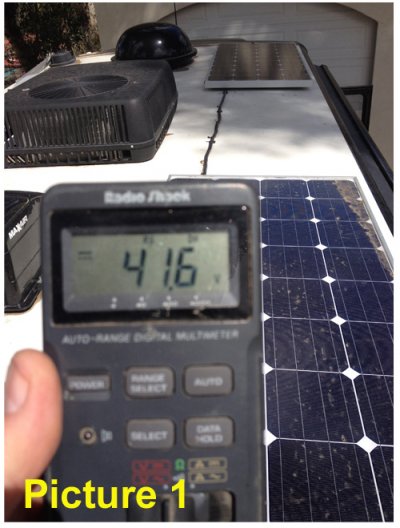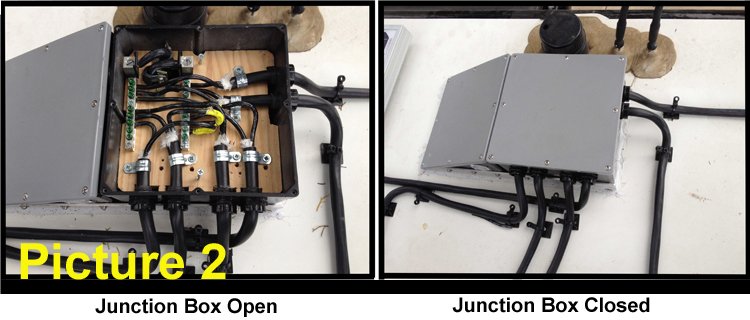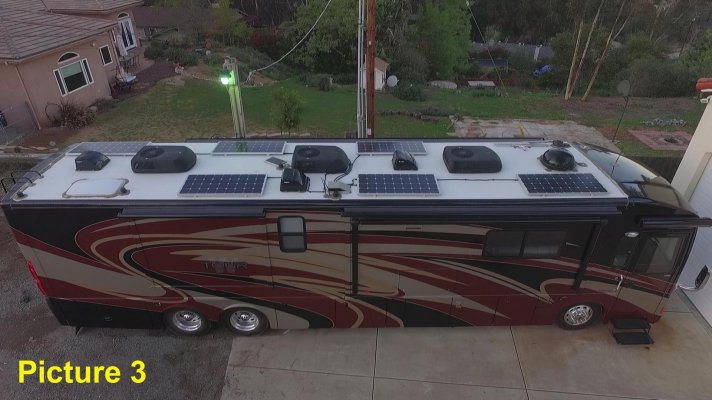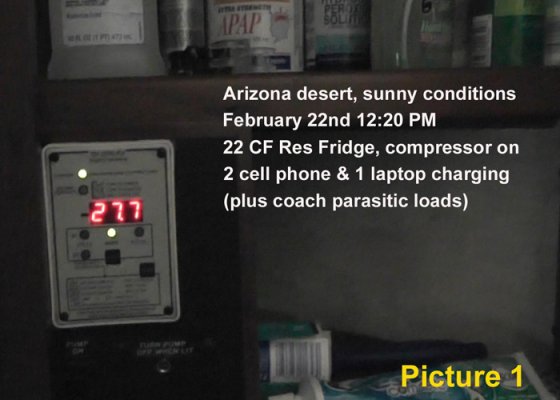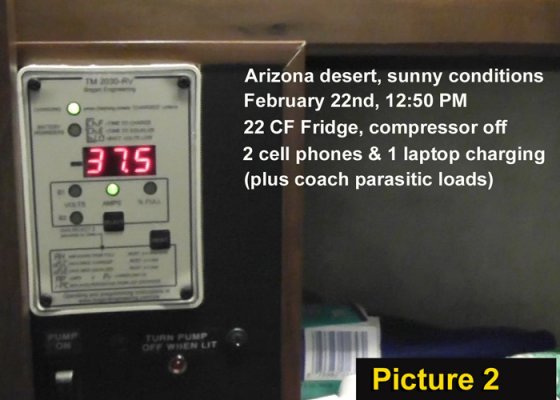Frank B
Well-known member
We have a 2010 Arctic Fox 30U that comes with one 150W solar panel mounted on the LR of the roof. There is room on the front of the trailer (both sides) and the RR of the roof for more panels. I need at least one more panel, but could probably afford to add 3 more. We boondock most of the time, and I can get additional panels for about $250 each. I have 6 GC-2's in this unit.
Question: How do I wire the additional panels?
Some have suggested plastic conduit outside on the roof between them. Sounds a bit tacky to me. However, trying to retrofit heavy wiring in the ceiling to 2 or 3 more panels does not sound like fun either. Can't see much in there from the fantastic fan vent holes other than wads of fiberglass. Does one try to pull wires with a snake though that, or bore right through into a cabinet top somewhere, and pull through there? I would probably have to do this for EACH additional panel, as I don't have enough room anywhere on the roof to butt 2 or more panels together.
I know that I will have to replace the solar controller with something larger, and quite possibly replace the existing wiring, as it may be way too light.
More questions to come after I hear from you.
Thanks.
Frank.
Question: How do I wire the additional panels?
Some have suggested plastic conduit outside on the roof between them. Sounds a bit tacky to me. However, trying to retrofit heavy wiring in the ceiling to 2 or 3 more panels does not sound like fun either. Can't see much in there from the fantastic fan vent holes other than wads of fiberglass. Does one try to pull wires with a snake though that, or bore right through into a cabinet top somewhere, and pull through there? I would probably have to do this for EACH additional panel, as I don't have enough room anywhere on the roof to butt 2 or more panels together.
I know that I will have to replace the solar controller with something larger, and quite possibly replace the existing wiring, as it may be way too light.
More questions to come after I hear from you.
Thanks.
Frank.

